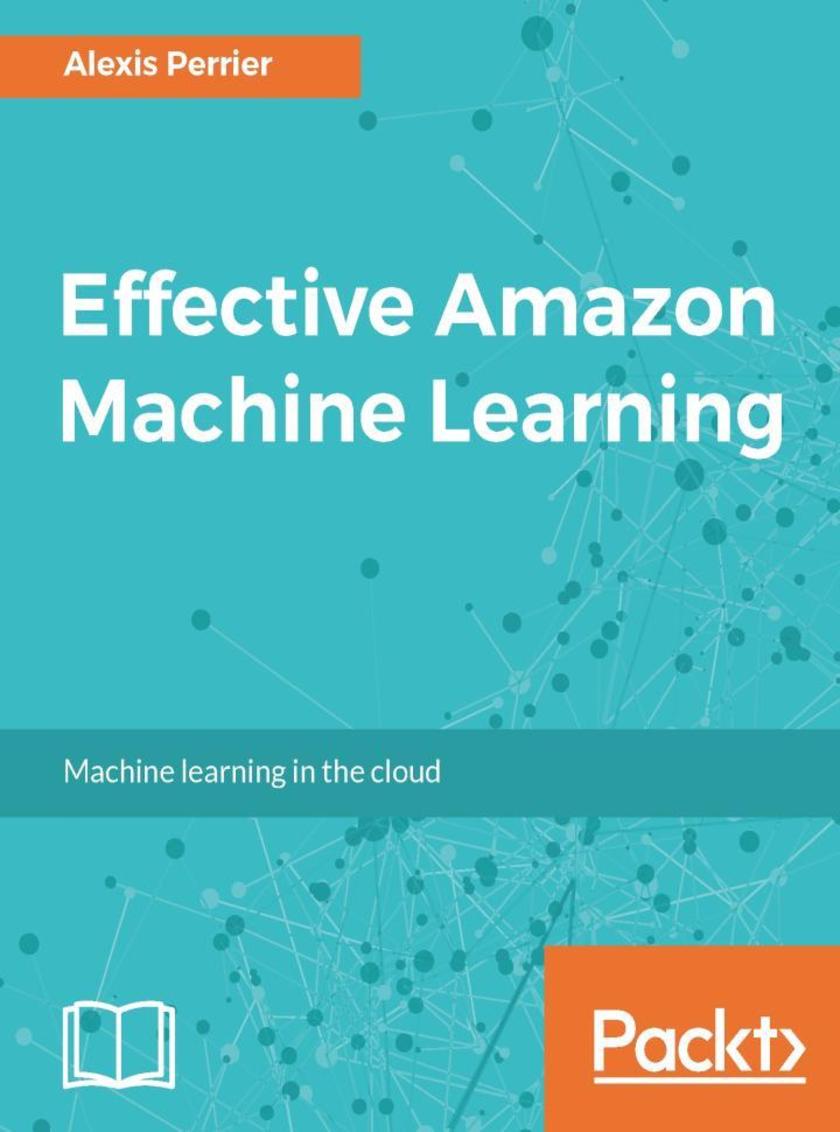
Effective Amazon Machine Learning
¥90.46
Predictive analytics is a complex domain requiring coding skills, an understanding of the mathematical concepts underpinning machine learning algorithms, and the ability to create compelling data visualizations. Following AWS simplifying Machine learning, this book will help you bring predictive analytics projects to fruition in three easy steps: data preparation, model tuning, and model selection. This book will introduce you to the Amazon Machine Learning platform and will implement core data science concepts such as classification, regression, regularization, overfitting, model selection, and evaluation. Furthermore, you will learn to leverage the Amazon Web Service (AWS) ecosystem for extended access to data sources, implement realtime predictions, and run Amazon Machine Learning projects via the command line and the Python SDK. Towards the end of the book, you will also learn how to apply these services to other problems, such as text mining, and to more complex datasets. What you will learn ?Learn how to use the Amazon Machine Learning service from scratch for predictive analytics ?Gain hands-on experience of key Data Science concepts ?Solve classic regression and classification problems ?Run projects programmatically via the command line and the Python SDK
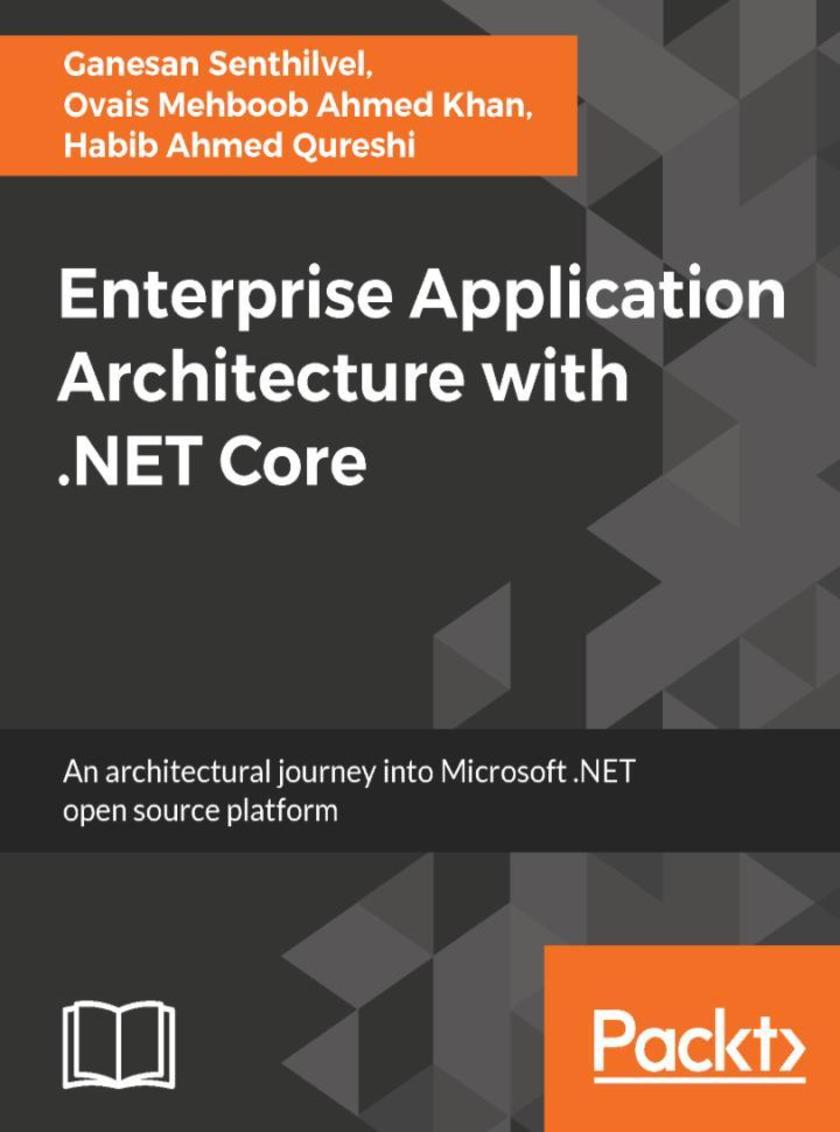
Enterprise Application Architecture with .NET Core
¥90.46
If you want to design and develop enterprise applications using .NET Core as the development framework and learn about industry-wide best practices and guidelines, then this book is for you. The book starts with a brief introduction to enterprise architecture, which will help you to understand what enterprise architecture is and what the key components are. It will then teach you about the types of patterns and the principles of software development, and explain the various aspects of distributed computing to keep your applications effective and scalable. These chapters act as a catalyst to start the practical implementation, and design and develop applications using different architectural approaches, such as layered architecture, service oriented architecture, microservices and cloud-specific solutions. Gradually, you will learn about the different approaches and models of the Security framework and explore various authentication models and authorization techniques, such as social media-based authentication and safe storage using app secrets. By the end of the book, you will get to know the concepts and usage of the emerging fields, such as DevOps, BigData, architectural practices, and Artificial Intelligence.
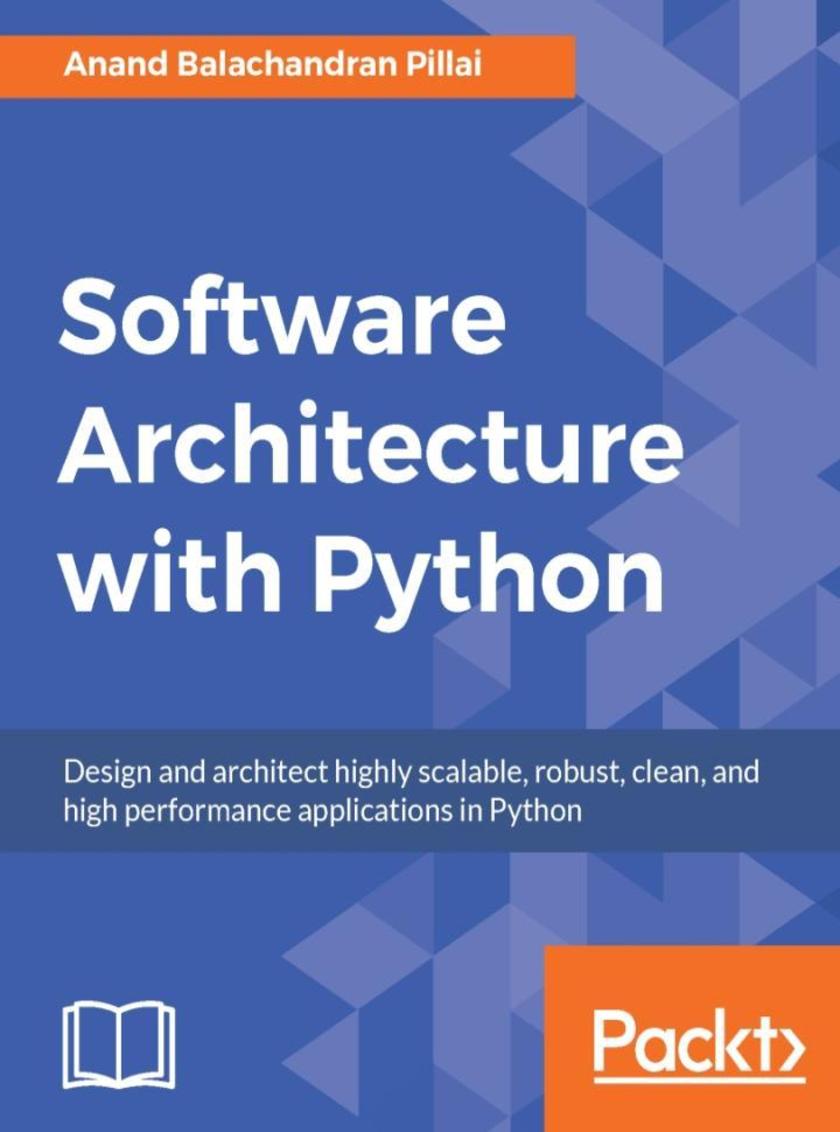
Software Architecture with Python
¥90.46
"Key Features ?Identify design issues and make the necessary adjustments to achieve improved performance ?Understand practical architectural quality attributes from the perspective of a practicing engineer and architect using Python ?Gain knowledge of architectural principles and how they can be used to provide accountability and rationale for architectural decisions Book De*ion This book starts off by explaining how Python fits into an application architecture. As you move along, you will understand the architecturally significant demands and how to determine them. Later, you'll get a complete understanding of the different architectural quality requirements that help an architect to build a product that satisfies business needs, such as maintainability/reusability, testability, scalability, performance, usability, and security. You will use various techniques such as incorporating DevOps, Continuous Integration, and more to make your application robust. You will understand when and when not to use object orientation in your applications. You will be able to think of the future and design applications that can scale proportionally to the growing business. The focus is on building the business logic based on the business process documentation and which frameworks are to be used when. We also cover some important patterns that are to be taken into account while solving design problems as well as those in relatively new domains such as the Cloud. This book will help you understand the ins and outs of Python so that you can make those critical design decisions that not just live up to but also surpass the expectations of your clients. What you will learn ?Build programs with the right architectural attributes ?Use Enterprise Architectural Patterns to solve scalable problems on the Web ?Understand design patterns from a Python perspective ?Optimize the performance testing tools in Python ?Deploy code in remote environments or on the Cloud using Python ?Secure architecture applications in Python About the Author Anand Balachandran Pillai is an Engineering and Technology professional with over 18 years of experience in the software industry in Product Engineering, Software Design & Architecture and Research. He has a Bachelor's degree in Mechanical Engineering from the Indian Institute of Technology, Madras. He has worked at companies such as Yahoo!, McAfee, and Infosys in the roles of Lead Engineer and Architect in product development teams, to build new products. His interests lie in Software Performance Engineering, High Scalability Architectures, Security and Open source communities. He often works with startups in lead technical or consulting role. He is the founder of the Bangalore Python Users Group and a Fellow of the Python Software Foundation (PSF). Anand is currently working as Senior Architect of Yegii Inc. "
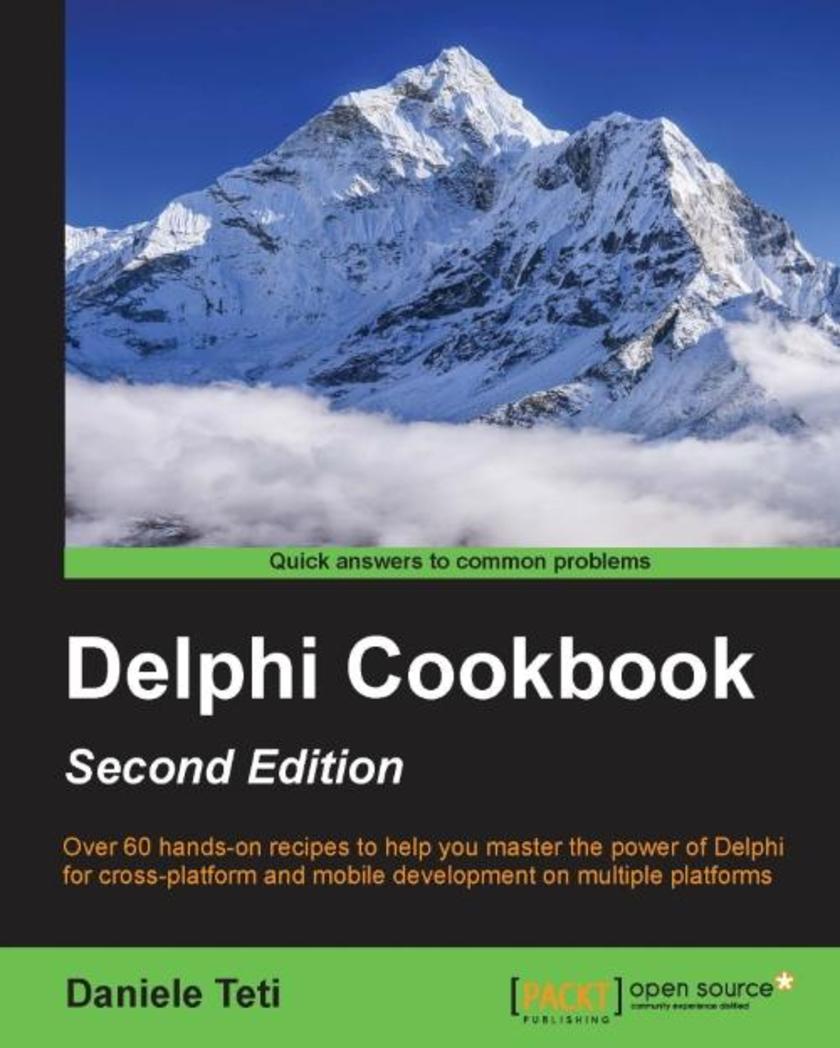
Delphi Cookbook - Second Edition
¥90.46
Over 60 hands-on recipes to help you master the power of Delphi for cross-platform and mobile development on multiple platforms About This Book Get to grips with Delphi to build and deploy various cross-platform applications Design, develop, and deploy real-world applications by implementing a single source codebase This swift guide will increase your productivity to develop applications with Delphi Who This Book Is For If you are an intermediate developer with a basic knowledge of Delphi and you want to develop cross-platform applications, then this book is for you. Familiarity with the fundamentals of RAD (Rapid Application Development) Studio is expected. What You Will Learn Develop visually stunning applications using FireMonkey Deploy LiveBinding effectively with the right OOP approach Create server-side programs to serve RESTful web services and provide data to your mobile apps Use well-defined GUI design patterns to build mobile applications that provide a great user experience Build mobile apps that read data from a remote server efficiently Call the platform native API on Android and iOS even for an unpublished API Manage software customization for your customer by making better use of an extended RTTI Implement the most popular design pattern without wasting too much time on debugging and bug fixing In Detail Delphi is a cross-platform Integrated Development Environment (IDE) that supports rapid application development for Microsoft Windows, Apple Mac OS X, Google Android, and Apple iOS. It helps you to concentrate on the real business and save yourself the pain of wandering amid GUI widget details, or having to tackle inter-platform incompatibilities. It also has a wide range of drag-and-drop controls, helping you code your business logic into your business model, and it compiles natively for desktop and mobile platforms. This book will teach you how to design and develop applications, deploy them on the cloud platform, and distribute them within an organization via Google Play and other similar platforms. You will begin with the basics of Delphi and get acquainted with JSON format strings, XSLT transformations, unicode encodings and various types of streams. We then move on to more advanced topics such as developing higher-order functions and using enumerators and RTTI. You will get an understanding of how Delphi RTL functions and how to use FireMonkey in a VCL application. We will then cover topics such as multithreading, using the parallel programming library and putting Delphi on a server. We will also take a look at the new feature of WebBroker Apache modules and then ride the mobile revolution with FireMonkey. By the end of the book, you will be able to develop and deploy cross-platform applications using Delphi. Style and approach Delphi Cookbook is an easy-to-follow guide, rich with hands-on examples of real-world programming tasks in Delphi.
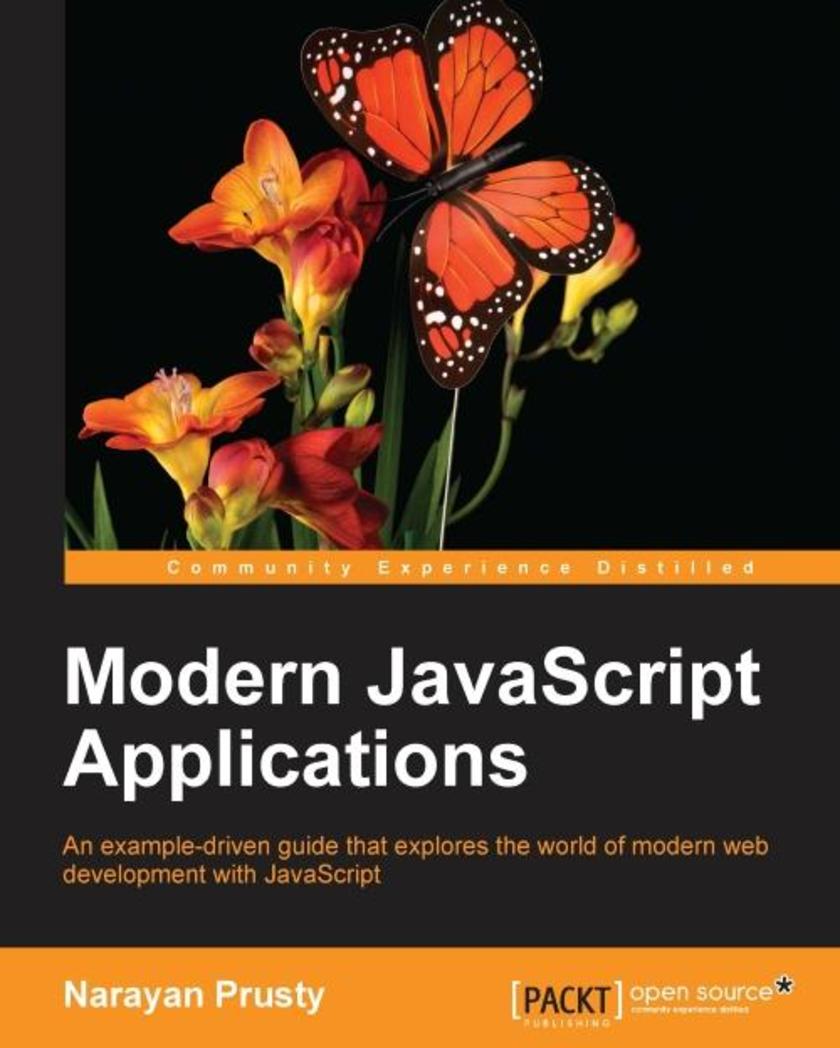
Modern JavaScript Applications
¥90.46
An example-driven guide that explores the world of modern web development with JavaScript About This Book Explore the new features of ECMAScript 6 and how they can be incorporated to build cutting edge web applications Learn about modern web architectures and build real-world apps on top of them Make use of modern JavaScript tools, techniques and frameworks to enhance your web development skills Who This Book Is For This book is for existing JavaScript developers who want to explore some of the modern JavaScript features, techniques, and architectures to develop cutting edge web applications. What You Will Learn Learn to create single page websites Gain expertise in responsive and dynamic website design Enable Real-time communications between client-client and client-server/server-client Create APIs for large-scale applications Write complete applications using functional reactive programming In Detail Over the years, JavaScript has taken significant strides in the world of modern web development to enhance the development of a wide range of applications with different architectures. This book explores the advanced and new features that have arrived in JavaScript and how they can be applied to develop high-quality applications with different architectures. The book begins by covering a single page application that builds on the innovative MVC approach using AngularJS. As we move forward, the book shows you how to develop an enterprise-level application with the microservices architecture, using Node to build web services. We then focus on network programming concepts and you’ll build a real-time web application with websockets. When you’ve gained a solid grip on the different architectures, we’ll move on to the area where JavaScript shines, that is, UI development. You’ll learn to build responsive, declarative UIs with React and Bootstrap. As we near the end of this book, you’ll see how the performance of web applications can be enhanced using Functional Reactive Programming (FRP). Along the way, the book also explores how the power of JavaScript can be increased multi-fold. After reading this book, you will have a solid knowledge of the latest JavaScript techniques, tools, and architecture to build modern web apps. Style and approach Covering all the new features in ECMAScript 6, this book takes a project-based approach to introduce you to all the latest techniques, tools, and architectures of JavaScript web development. Each project that the book builds will show you a different angle of the power of JavaScript in modern web development.
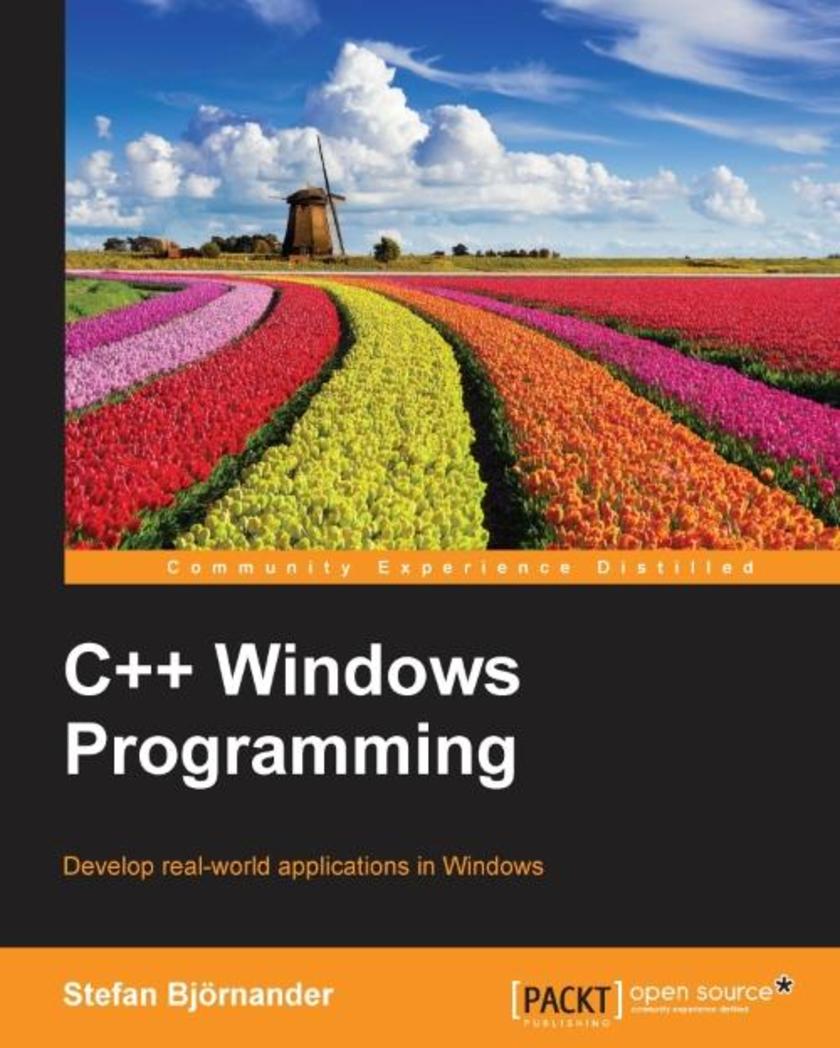
C++ Windows Programming
¥90.46
Develop real-world applications in Windows. About This Book Create diverse applications featuring the versatility of Small Windows C++ library Learn about object-oriented programming in Windows and how to develop a large object-oriented class library in C++ Understand how to tackle application-specific problems along with acquiring a deep understanding of the workings of Windows architecture Who This Book Is For This book is for application developers who want a head-first approach into Windows programming. It will teach you how to develop an object-oriented class library in C++ and enhanced applications in Windows. Basic knowledge of C++ and the object-oriented framework is assumed to get the most out of this book. What You Will Learn Develop advanced real-world applications in Windows Design and implement a graphical object-oriented class library in C++ Get to grips with the workings of the integral aspects of the Win32 API, such as mouse input, drawing, cut-and-paste, file handling, and drop files Identify general problems when developing graphical applications as well as specific problems regarding drawing, spreadsheet, and word processing applications Implement classes, functions, and macros of the object-oriented class library developed in the book and how we implement its functionality by calling functions and macros in the Win32 API In Detail It is critical that modern developers have the right tools to build practical, user-friendly, and efficient applications in order to compete in today’s market. Through hands-on guidance, this book illustrates and demonstrates C++ best practices and the Small Windows object-oriented class library to ease your development of interactive Windows applications. Begin with a focus on high level application development using Small Windows. Learn how to build four real-world applications which focus on the general problems faced when developing graphical applications. Get essential troubleshooting guidance on drawing, spreadsheet, and word processing applications. Finally finish up with a deep dive into the workings of the Small Windows class library, which will give you all the insights you need to build your own object-oriented class library in C++. Style and approach This book takes a tutorial-style approach that will demonstrate the features of a C++ object-oriented library by developing interactive Windows applications.
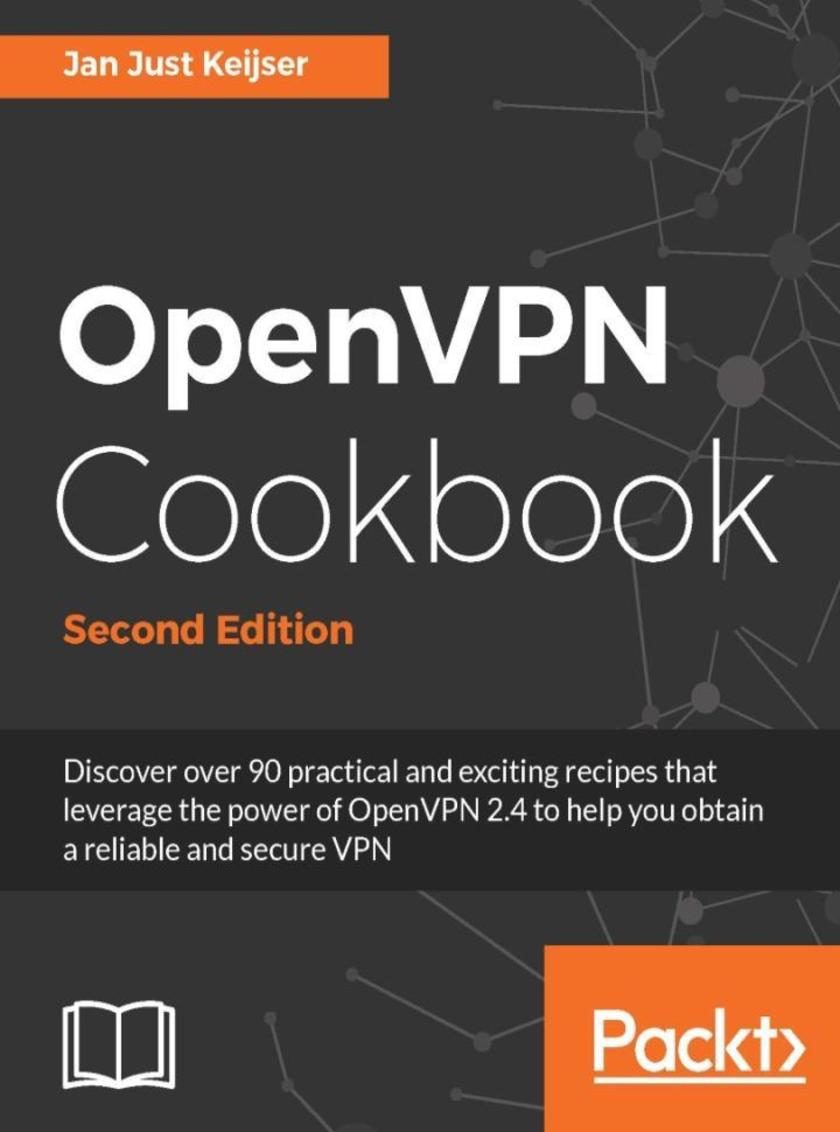
OpenVPN Cookbook - Second Edition
¥90.46
Discover over 90 practical and exciting recipes that leverage the power of OpenVPN 2.4 to help you obtain a reliable and secure VPN About This Book Master the skills of configuring, managing, and securing your VPN using the latest OpenVPN Gain expertise in establishing IPv6 connections and understand PolarSSL using the latest version of OpenVPN This book contains enticing recipes about OpenVPN functionalities that cater to mission critical applications Who This Book Is For This book is for system administrators who have a basic knowledge of OpenVPN and are eagerly waiting to build, secure, and manage VPNs using the latest version. This book assumes some prior knowledge of TCP/IP networking and OpenVPN and you must have network administration skills to get the most out of this book. What You Will Learn Determine the best type of OpenVPN setup for your networking needs Get to grips with the encryption, authentication, and certifications features of OpenSSL. Integrate an OpenVPN server into the local IT infrastructure with the *ing features of OpenVPN Ease the integration of Windows clients into the VPN using Windows-specific client-side configuration Understand the authentication plugins for PAM and LDAP Get to know the difference between TUN-style and TAP-style networks and when to use what Troubleshoot your VPN setup Establish a connection via IPv6 along with demonstrations In Detail OpenVPN provides an extensible VPN framework that has been designed to ease site-specific customization, such as providing the capability to distribute a customized installation package to clients, and supporting alternative authentication methods via OpenVPN’s plugin module interface. This book provides you with many different recipes to help you set up, monitor, and troubleshoot an OpenVPN network. You will learn to configure a scalable, load-balanced VPN server farm that can handle thousands of dynamic connections from incoming VPN clients. You will also get to grips with the encryption, authentication, security, extensibility, and certifications features of OpenSSL. You will also get an understanding of IPv6 support and will get a demonstration of how to establish a connection via IPv64. This book will explore all the advanced features of OpenVPN and even some undocumented options, covering all the common network setups such as point-to-point networks and multi-client TUN-style and TAP-style networks. Finally, you will learn to manage, secure, and troubleshoot your virtual private networks using OpenVPN 2.4. Style and approach This practical, recipe-based book covers the core functionalities of OpenVPN ending with troubleshooting, performance tuning and making the readers inquisitive about the advanced features.
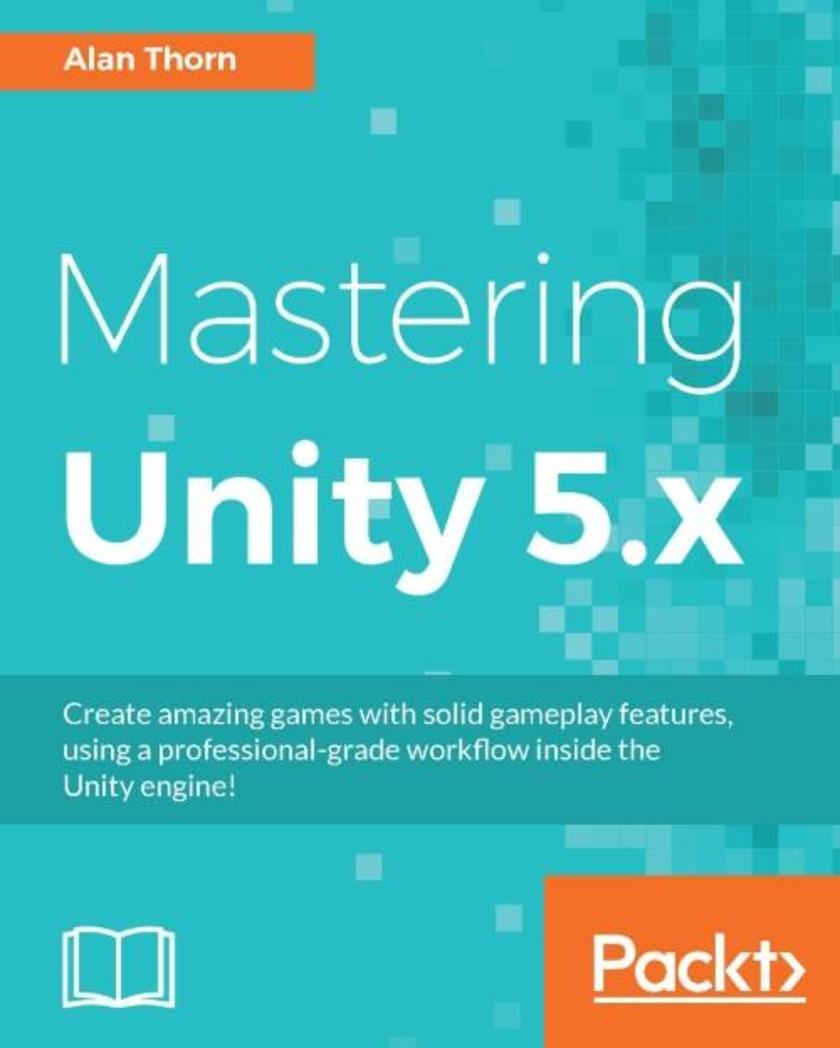
Mastering Unity 5.x
¥90.46
Create amazing games with solid gameplay features, using a professional-grade workflow inside the Unity engine! About This Book Become a Unity master by creating a practical, in-depth game-development project with Unity Use advanced C# *ing to unlock the complete potential of Unity 5 Use Version Control to Effectively Manage and Scale your workflow Who This Book Is For If you are a Unity developer who now wants to develop and deploy interesting games by leveraging the new features of Unity 5.x, then this is the book for you. Basic knowledge of C# programming is assumed. What You Will Learn Explore hands-on tasks and real-world scenarios to make a Unity horror adventure game Create enemy characters that act intelligently and make reasoned decisions Use data files to save and restore game data in a way that is platform-agnostic Get started with VR development Use Navigation Meshes, Occlusion Culling, and the Profiler tools Work confidently with GameObjects, Rotations, and Transformations Understand specific gameplay features such as AI enemies, inventory systems, and level design In Detail Do you want to take the leap from being an everyday Unity developer to being a pro game developerThen look no further! This book is your one stop solution to creating mesmerizing games with lifelike features and amazing gameplay. This book takes an in-depth focus on a practical project with Unity, building a first-person game with many features. You’ll dive deep into the architecture of a Unity game, creating expansive worlds, interesting render effects, and other features to make your games special. You will create individual game components, use efficient animation techniques, and implement collision and physics effectively. Specifically, we’ll explore optimal techniques for importing game assets, such as meshes and textures; tips and tricks for effective level design; how to animate and * NPCs; how to configure and deploy to mobile devices; how to prepare for VR development; and how to work with version control, and more. By the end of this book, you’ll have developed sufficient competency in Unity development to produce fun games with confidence. Style and approach This book takes a step-by-step, practical tutorial approach. You will create an advanced level Unity game with an emphasis on leveraging the advanced Unity 5 features. You will make the most of the Unity 5 advanced features while you develop the game in its entirety.
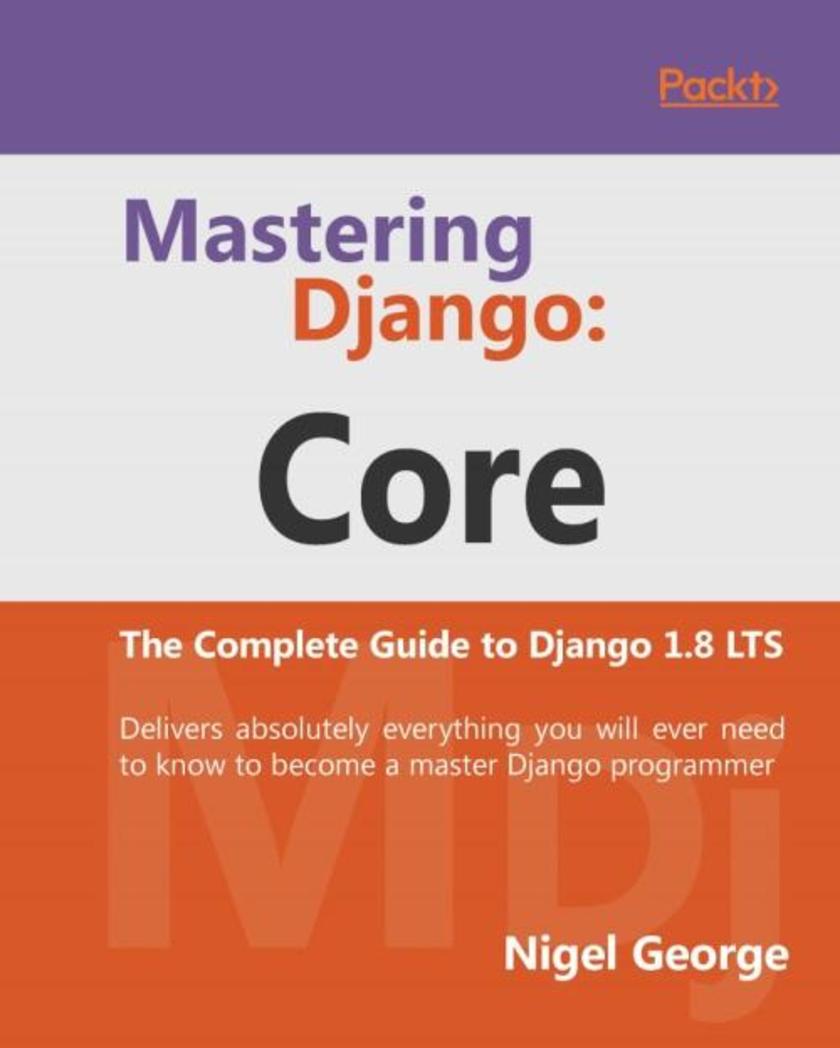
Mastering Django: Core
¥90.46
Delivers absolutely everything you will ever need to know to become a master Django programmer About This Book Gain a complete understanding of Django—the most popular, Python-based web framework in the world Gain the skills to successfully designing, developing, and deploying your app This book is packaged with fully described code so you can learn the fundamentals and the advanced topics to get a complete understanding of all of Django’s core functions Who This Book Is For This book assumes you have a basic understanding of the Internet and programming. Experience with Python or Django would be an advantage, but is not necessary. It is ideal for beginner to intermediate programmers looking for a fast, secure, scalable, and maintainable alternative web development platform to those based on PHP, Java, and dotNET. What You Will Learn Use Django to access user-submitted form data, validate it, and work with it Get to know advanced URLconf tips and tricks Extend Django’s template system with custom code Define models and use the database API to create, retrieve, update, and delete records Fully extend and customize the default implementation as per your project’s needs Test and deploy your Django application Get to know more about Django’s session, cache Framework, and middleware In Detail Mastering Django: Core is a completely revised and updated version of the original Django Book, written by Adrian Holovaty and Jacob Kaplan-Moss - the creators of Django. The main goal of this book is to make you a Django expert. By reading this book, you’ll learn the skills needed to develop powerful websites quickly, with code that is clean and easy to maintain. This book is also a programmer’s manual that provides complete coverage of the current Long Term Support (LTS) version of Django. For developers creating applications for commercial and business critical deployments, Mastering Django: Core provides a complete, up-to-date resource for Django 1.8LTS with a stable code-base, security fixes and support out to 2018. Style and approach This comprehensive step-by-step practical guide offers a thorough understanding of all the web development concepts related to Django. In addition to explaining the features of Django, this book provides real-world experience on how these features fit together to build extraordinary apps.
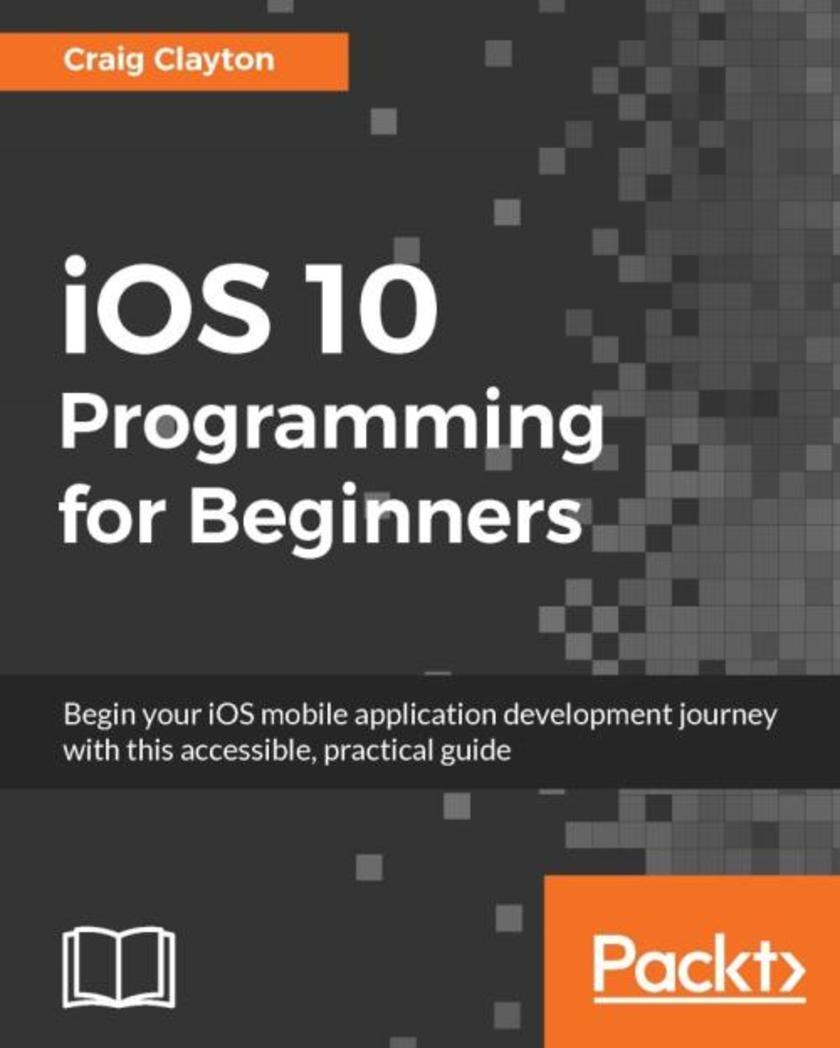
iOS 10 Programming for Beginners
¥90.46
Begin your iOS mobile application development journey with this accessible, practical guide About This Book Use Swift 3 and latest iOS 10 features to build awesome apps for iPhone and iPad Explore and use a wide range of Apple development tools to become a confident iOS developer From prototype to App Store—find out how to build an app from start to finish! Who This Book Is For This book is for beginners who want to be able to create iOS applications. If you have some programming experience, this book is a great way to get a full understanding of how to create an iOS application from scratch and submit it to the App Store. You do not need any knowledge of Swift or any prior programming experience. What You Will Learn Get to grips with Swift 3 and Xcode, the building blocks of Apple development Get to know the fundamentals of Swift, including variables, constants, and control flow Discover the distinctive design principles that define the iOS user experience See how to prototype your app with Swift’s Playgrounds feature Build a responsive UI that looks great on a range of devices Find out how to use CoreLocation to add location services to your app Add push notifications to your app Make your app able to be used on both iPhone and iPad In Detail You want to build iOS applications for iPhone and iPad—but where do you startForget sifting through tutorials and blog posts, this is a direct route into iOS development, taking you through the basics and showing you how to put the principles into practice. With every update, iOS has become more and more developer-friendly, so take advantage of it and begin building applications that might just take the App Store by storm! Whether you’re an experienced programmer or a complete novice, this book guides you through every facet of iOS development. From Xcode and Swift—the building blocks of modern Apple development—and Playgrounds for beginners, one of the most popular features of the iOS development experience, you’ll quickly gain a solid foundation to begin venturing deeper into your development journey. For the experienced programmer, jump right in and learn the latest iOS 10 features. You’ll also learn the core elements of iOS design, from tables to tab bars, as well as more advanced topics such as gestures and animations that can give your app the edge. Find out how to manage databases, as well as integrating standard elements such as photos, GPS into your app. With further guidance on beta testing with TestFlight, you’ll quickly learn everything you need to get your project on the App Store! Style and approach Created for anyone that wants to build their first iOS application, this book offers practical, actionable guidance through iOS development. Combining engaging visuals with accessible, step-by-step instructiona and explanation, this book will not only develop the your understanding, but also show you how to put your knowledge to work.
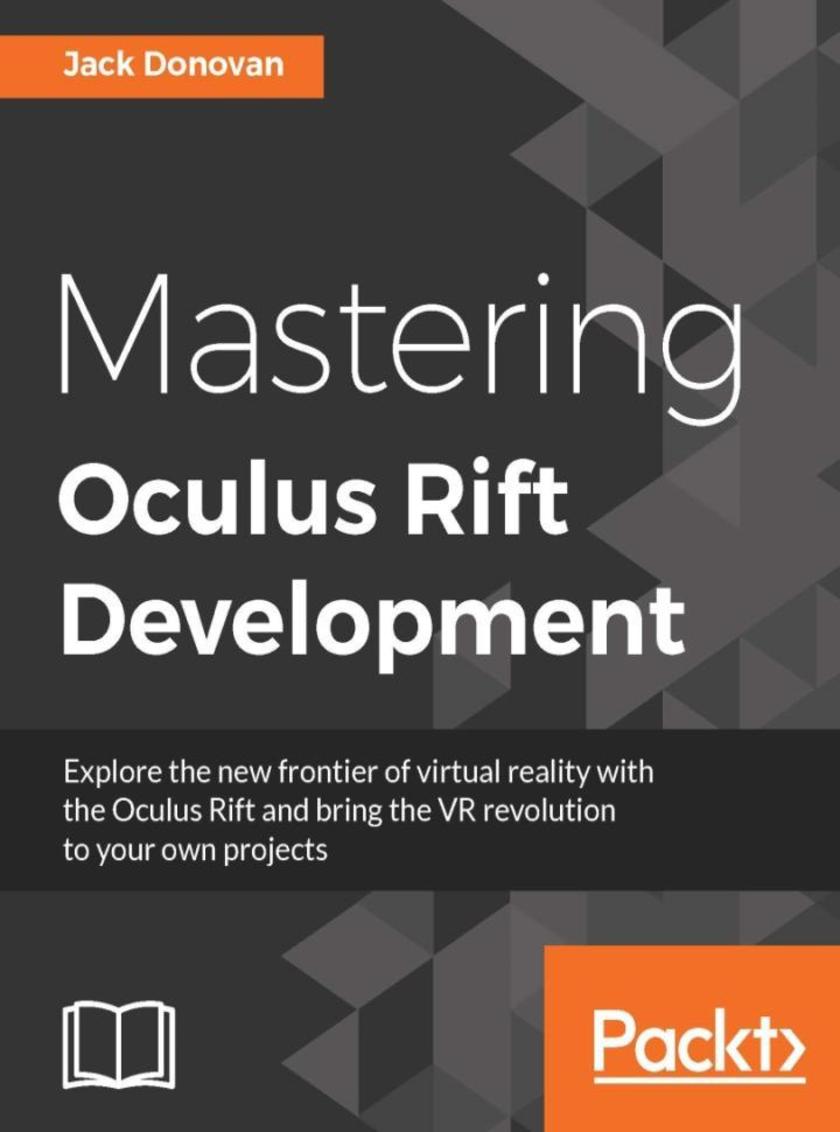
Mastering Oculus Rift Development
¥90.46
Explore the new frontier of virtual reality with the Oculus Rift and bring the VR revolution to your own projects About This Book Create immersive 3D games especially designed for the Oculus Rift platform Build complex realistic virtual reality (VR) games with the Unity Engine Create striking VR environments with advanced graphical techniques Who This Book Is For This book is for aspiring indie developers and VR enthusiasts who want to bring their ideas into virtual reality with a new platform that provides an unprecedented level of realism and immersion. What You Will Learn Increase immersion with 3D audio and intuitive interfaces Create group VR experiences using multi-player networking Design fun and engaging mechanics that utilize VR principles Explore the best ways to navigate and interact using the Oculus Rift Design intuitive ways to navigate and interact with scenes in VR Add stunning realism to a scene with three-dimensional audio Invent mechanics and features that take full advantage of VR hardware In Detail Virtual reality (VR) is changing the world of gaming and entertainment as we know it. VR headsets such as the Oculus Rift immerse players in a virtual world by tracking their head movements and simulating depth, giving them the feeling that they are actually present in the environment. We will first use the Oculus SDK in the book and will then move on to the widely popular Unity Engine, showing you how you can add that extra edge to your VR games using the power of Unity. In this book, you’ll learn how to take advantage of this new medium by designing around each of its unique features. This book will demonstrate the Unity 5 game engine, one of most widely-used engines for VR development, and will take you through a comprehensive project that covers everything necessary to create and publish a complete VR experience for the Oculus Rift. You will also be able to identify the common perils and pitfalls of VR development to ensure that your audience has the most comfortable experience possible. By the end of the book, you will be able to create an advanced VR game for the Oculus Rift, and you’ll have everything you need to bring your ideas into a new reality. Style and approach This book takes a step-by-step tutorial approach with illustrative examples to help you implement the projects on your own. The book lets you first get to grips with the Oculus SDK and then moves on to the Unity Engine to add realistic graphics and features in your games.

Cracking the IT Architect Interview
¥90.46
The ultimate guide to successful interviews for Enterprise, Business, Domain, Solution, and Technical Architect roles as well as IT Advisory Consultant and Software Designer roles About This Book Learn about Enterprise Architects IT strategy and NFR – this book provides you with methodologies, best practices, and frameworks to ace your interview A holistic view of key architectural skills and competencies with 500+ questions that cover 12 domains 100+ diagrams depicting scenarios, models, and methodologies designed to help you prepare for your interview Who This Book Is For This book is for aspiring enterprise, business, domain, solution, and technical architects. It is also ideal for IT advisory consultants and IT designers who wish to interview for such a role. Interviewers will be able leverage this book to make sure they hire candidates with the right competencies to meet the role requirements. What You Will Learn Learn about IT strategies, NFR, methodologies, best practices, and frameworks to ace your interview Get a holistic view of key concepts, design principles, and patterns related to evangelizing web and Java enterprise applications Discover interview preparation guidelines through case studies Use this as a reference guide for adopting best practices, standards, and design guidelines Get a better understanding with 60+ diagrams depicting various scenarios, models, and methodologies Benefit from coverage of all architecture domains including EA (Business, Data, Infrastructure, and Application), SA, integration, NFRs, security, and SOA, with extended coverage from IT strategies to the NFR domain In Detail An architect attends multiple interviews for jobs or projects during the course of his or her career. This book is an interview resource created for designers, consultants, technical, solution, domain, enterprise, and chief architects to help them perform well in interview discussions and launch a successful career. The book begins by providing de*ions of architecture skills and competencies that cover the 12 key domains, including 350+ questions relating to these domains. The goal of this book is to cover all the core architectural domains. From an architect’s perspective, it is impossible to revise or learn about all these key areas without a good reference guide – this book is the solution. It shares experiences, learning, insights, and proven methodologies that will benefit practitioners, SMEs, and aspirants in the long run. This book will help you tackle the NFR domain, which is a key aspect pertaining to architecting applications. It typically takes years to understand the core concepts, fundamentals, patterns, and principles related to architecture and designs. This book is a goldmine for the typical questions asked during an interview and will help prepare you for success! Style and approach This book will help you prepare for interviews for architectural profiles by providing likely questions, explanations, and expected answers. It is an insight-rich guide that will help you develop strategic, tactical, and operational thinking for your interview.
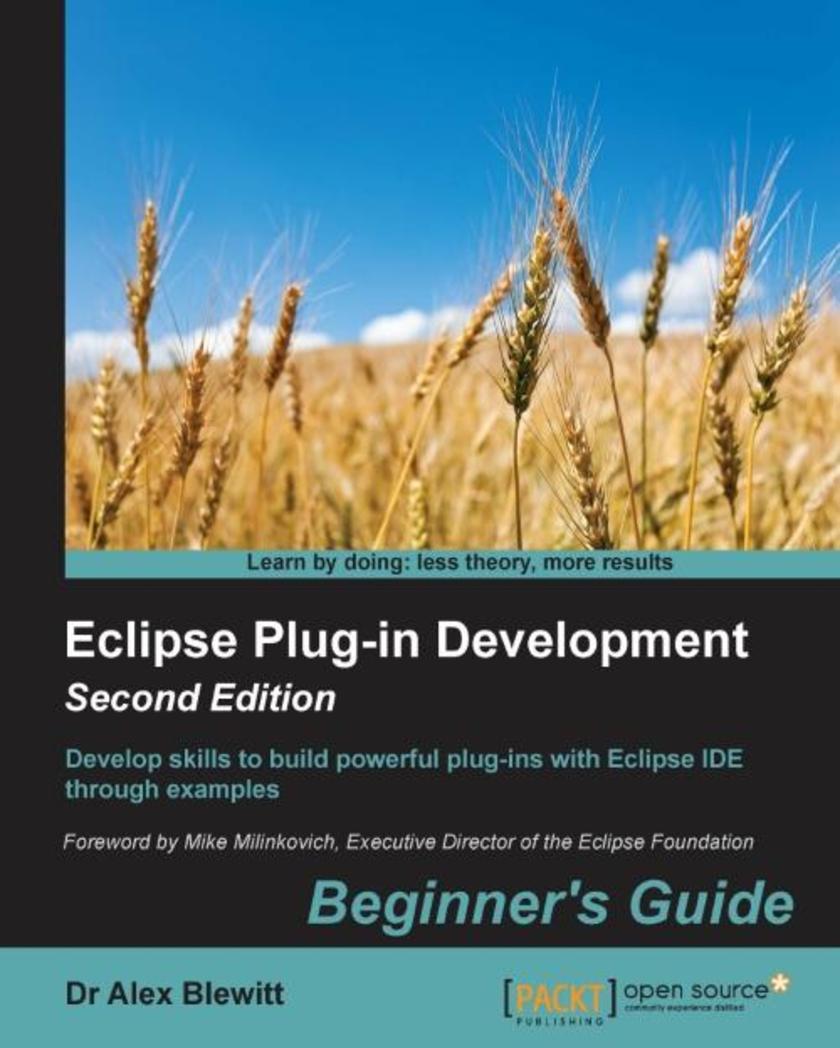
Eclipse Plug-in Development: Beginner's Guide - Second Edition
¥90.46
Develop skills to build powerful plug-ins with Eclipse IDE through examples About This Book Create useful plug-ins to make Eclipse work for you Learn how to migrate Eclipse 3.x plug-ins to Eclipse 4.x From automation to testing, find out how to get your IDE performing at an impressive standard Who This Book Is For This book is for Java developers familiar with Eclipse who need more from the IDE. This book will sharpen your confidence and make you a more productive developer with a tool that supports rather than limits you. What You Will Learn Create plug-ins for Eclipse 4.x Test plug-ins automatically with JUnit Display tree and table information in views Upgrade Eclipse 3.x plug-ins to Eclipse 4.x Find out how to build user interfaces from SWT and JFace Run tasks in the background and update the user interface asynchronously Automate builds of plug-ins and features Automate user interface tests with SWTBot In Detail Eclipse is used by everyone from indie devs to NASA engineers. Its popularity is underpinned by its impressive plug-in ecosystem, which allows it to be extended to meet the needs of whoever is using it. This book shows you how to take full advantage of the Eclipse IDE by building your own useful plug-ins from start to finish. Taking you through the complete process of plug-in development, from packaging to automated testing and deployment, this book is a direct route to quicker, cleaner Java development. It may be for beginners, but we're confident that you'll develop new skills quickly. Pretty soon you'll feel like an expert, in complete control of your IDE. Don't let Eclipse define you - extend it with the plug-ins you need today for smarter, happier, and more effective development. Style and approach Packed with plenty of examples so you're never stuck, or never left simply reading instructions, this book encourages you to get started immediately. This book is for developers who want to develop, not just learn.
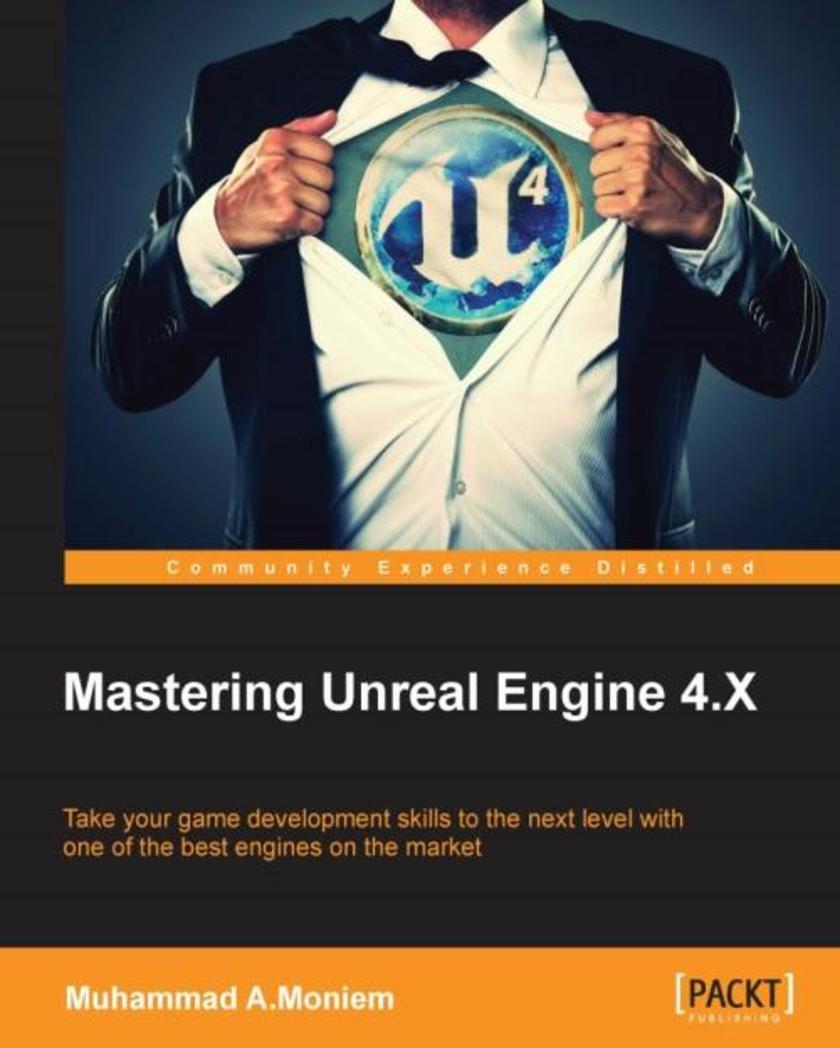
Mastering Unreal Engine 4.X
¥90.46
Take your game development skills to the next level with one of the best engines on the market About This Book Build an entire AAA game level throughout the book Take your C++ *ing skills to the next level and use them extensively to build the game An advanced practical guide with a tutorial style approach that will help you make the best of Unreal engine 4 Who This Book Is For This book is for game developers who have a basic knowledge of Unreal Engine and C++ *ing knowledge. If you want to take the leap from a casual game developer to a full-fledged professional game developer with Unreal Engine 4, this is the book for you. What You Will Learn Script your player controls in C++ Build a superb and engaging level with advanced design techniques Program AI with C++ Use Cascade to add life to your games Use custom shaders and advanced shading techniques to make things pretty Implement an awesome UI in the game Control gameplay using data tables In Detail Unreal Engine 4 has garnered a lot of attention in the gaming world because of its new and improved graphics and rendering engine, the physics simulator, particle generator, and more. This book is the ideal guide to help you leverage all these features to create state-of-the-art games that capture the eye of your audience. Inside we’ll explain advanced shaders and effects techniques and how you can implement them in your games. You’ll create custom lighting effects, use the physics simulator to add that extra edge to your games, and create customized game environments that look visually stunning using the rendering technique. You’ll find out how to use the new rendering engine efficiently, add amazing post-processing effects, and use data tables to create data-driven gameplay that is engaging and exciting. By the end of this book, you will be able to create professional games with stunning graphics using Unreal Engine 4! Style and approach An advanced guide that will take you to the next level of developing games with Unreal engine with illustrative examples that will make you confident of creating customized professional level games on your won.
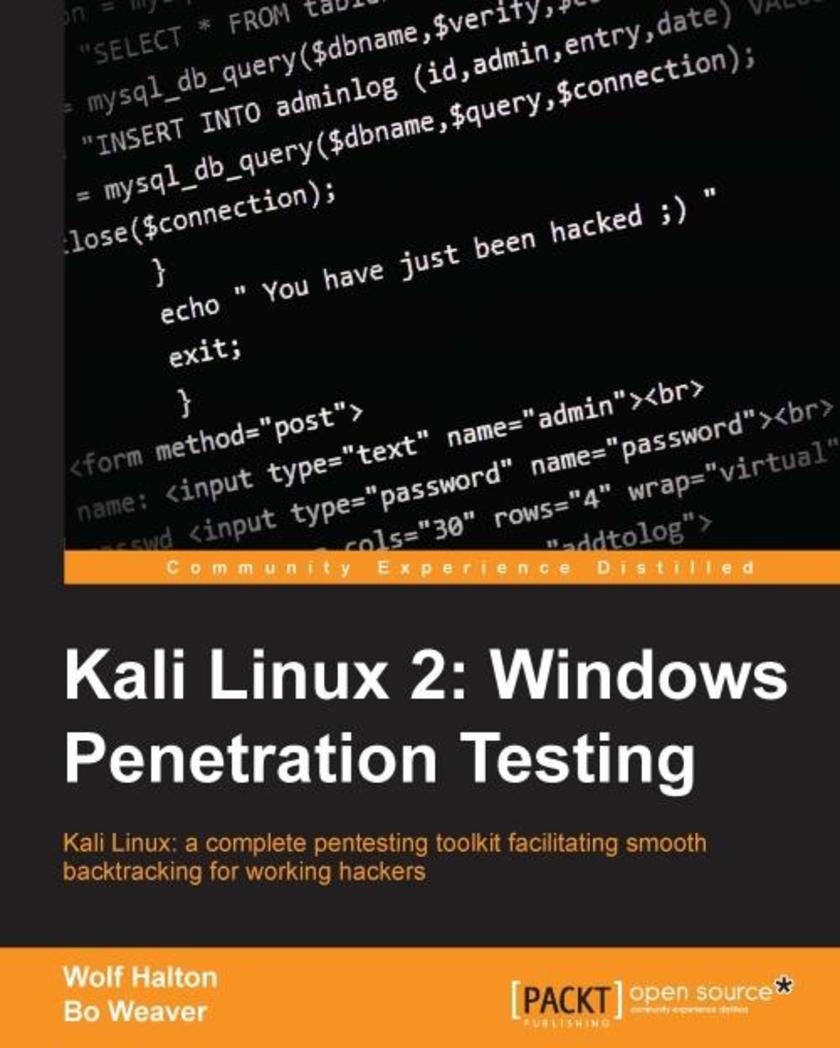
Kali Linux 2: Windows Penetration Testing
¥90.46
Kali Linux: a complete pentesting toolkit facilitating smooth backtracking for working hackers About This Book Conduct network testing, surveillance, pen testing and forensics on MS Windows using Kali Linux Footprint, monitor, and audit your network and investigate any ongoing infestations Customize Kali Linux with this professional guide so it becomes your pen testing toolkit Who This Book Is For If you are a working ethical hacker who is looking to expand the offensive skillset with a thorough understanding of Kali Linux, then this is the book for you. Prior knowledge about Linux operating systems and the BASH terminal emulator along with Windows desktop and command line would be highly beneficial. What You Will Learn Set up Kali Linux for pen testing Map and enumerate your Windows network Exploit several common Windows network vulnerabilities Attack and defeat password schemes on Windows Debug and reverse-engineer Windows programs Recover lost files, investigate successful hacks and discover hidden data in innocent-looking files Catch and hold admin rights on the network, and maintain backdoors on the network after your initial testing is done In Detail Microsoft Windows is one of the two most common OS and managing its security has spawned the discipline of IT security. Kali Linux is the premier platform for testing and maintaining Windows security. Kali is built on the Debian distribution of Linux and shares the legendary stability of that OS. This lets you focus on using the network penetration, password cracking, forensics tools and not the OS. This book has the most advanced tools and techniques to reproduce the methods used by sophisticated hackers to make you an expert in Kali Linux penetration testing. First, you are introduced to Kali's top ten tools and other useful reporting tools. Then, you will find your way around your target network and determine known vulnerabilities to be able to exploit a system remotely. Next, you will prove that the vulnerabilities you have found are real and exploitable. You will learn to use tools in seven categories of exploitation tools. Further, you perform web access exploits using tools like websploit and more. Security is only as strong as the weakest link in the chain. Passwords are often that weak link. Thus, you learn about password attacks that can be used in concert with other approaches to break into and own a network. Moreover, you come to terms with network sniffing, which helps you understand which users are using services you can exploit, and IP spoofing, which can be used to poison a system's DNS cache. Once you gain access to a machine or network, maintaining access is important. Thus, you not only learn penetrating in the machine you also learn Windows privilege’s escalations. With easy to follow step-by-step instructions and support images, you will be able to quickly pen test your system and network. Style and approach This book is a hands-on guide for Kali Linux pen testing. This book will provide all the practical knowledge needed to test your network's security using a proven hacker's methodology. The book uses easy-to-understand yet professional language for explaining concepts.
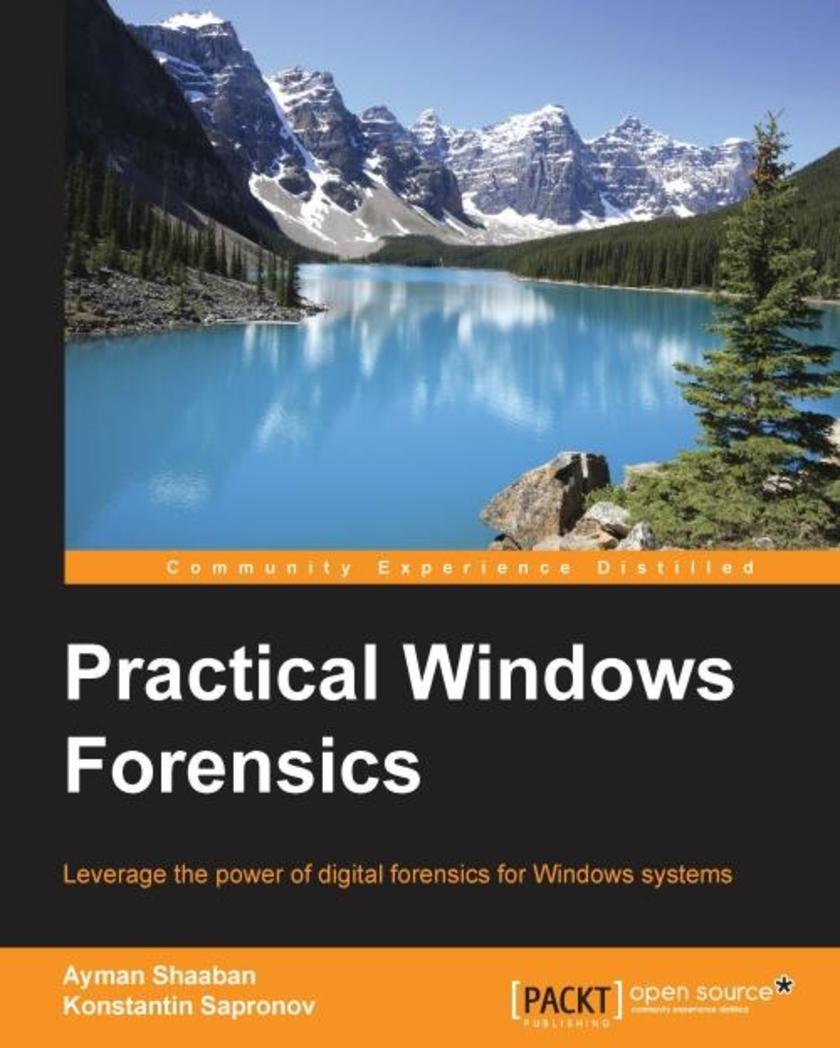
Practical Windows Forensics
¥90.46
Leverage the power of digital forensics for Windows systems About This Book Build your own lab environment to analyze forensic data and practice techniques. This book offers meticulous coverage with an example-driven approach and helps you build the key skills of performing forensics on Windows-based systems using digital artifacts. It uses specific open source and Linux-based tools so you can become proficient at analyzing forensic data and upgrade your existing knowledge. Who This Book Is For This book targets forensic analysts and professionals who would like to develop skills in digital forensic analysis for the Windows platform. You will acquire proficiency, knowledge, and core skills to undertake forensic analysis of digital data. Prior experience of information security and forensic analysis would be helpful. You will gain knowledge and an understanding of performing forensic analysis with tools especially built for the Windows platform. What You Will Learn Perform live analysis on victim or suspect Windows systems locally or remotely Understand the different natures and acquisition techniques of volatile and non-volatile data. Create a timeline of all the system actions to restore the history of an incident. Recover and analyze data from FAT and NTFS file systems. Make use of various tools to perform registry analysis. Track a system user's browser and e-mail activities to prove or refute some hypotheses. Get to know how to dump and analyze computer memory. In Detail Over the last few years, the wave of the cybercrime has risen rapidly. We have witnessed many major attacks on the governmental, military, financial, and media sectors. Tracking all these attacks and crimes requires a deep understanding of operating system operations, how to extract evident data from digital evidence, and the best usage of the digital forensic tools and techniques. Regardless of your level of experience in the field of information security in general, this book will fully introduce you to digital forensics. It will provide you with the knowledge needed to assemble different types of evidence effectively, and walk you through the various stages of the analysis process. We start by discussing the principles of the digital forensics process and move on to show you the approaches that are used to conduct analysis. We will then study various tools to perform live analysis, and go through different techniques to analyze volatile and non-volatile data. Style and approach This is a step-by-step guide that delivers knowledge about different Windows artifacts. Each topic is explained sequentially, including artifact analysis using different tools and techniques. These techniques make use of the evidence extracted from infected machines, and are accompanied by real-life examples.

3D Game Design with Unreal Engine 4 and Blender
¥90.46
Combine the powerful UE4 with Blender to create visually appealing and comprehensive game environments About This Book The only resource that shows how you can incorporate Blender into your Unreal Engine 4 Game environment Create amazing 3D game environments by leveraging the power of Blender and Unreal Engine 4 Practical step-by-step approach with plenty of illustrative examples to get you started immediately Who This Book Is For This book would be ideal for 3D artists and game designers who want to create amazing 3D game environments and leverage the power of Blender with Unreal Engine 4. 3D design basics would be necessary to get the most out of this book. Some previous experience with Blender would be helpful but not essential What You Will Learn Create a fully functioning game level of your own design using Blender and Unreal Engine 4 Customize your level with detailed 3D assets created with Blender Import assets into Unreal Engine 4 to create an amazing finished product Build a detailed dynamic environment with goals and an ending Explore Blender’s incredible animation tools to animate elements of your game Create great environments using sound effects, particle effects, and class blueprints In Detail Unreal Engine 4 now has support for Blender, which was not available in earlier versions. This has opened up new possibilities and that is where this book comes in. This is the first book in the market combining these two powerful game and graphic engines. Readers will build an amazing high-level game environment with UE4 and will show them how to use the power of Blender 3D to create stunning animations and 3D effects for their game. This book will start with creating levels, 3D assets for the game, game progression, light and environment control, animation, and so on. Then it will teach readers to add amazing visual effects to their game by applying rendering, lighting, rigging, and compositing techniques in Blender. Finally, readers will learn how to smoothly transfer blender files to UE4 and animate the game assets. Each chapter will add complexities to the game environment. Style and approach This will have a clear, step-by-step approach to creating game assets in Blender and then importing them to UE4 to create stunning game environments. All asset creation techniques are explained in detail along with tips on how to use them to create your own game environments. The book offers end-to-end coverage of how to design a game level from scratch.
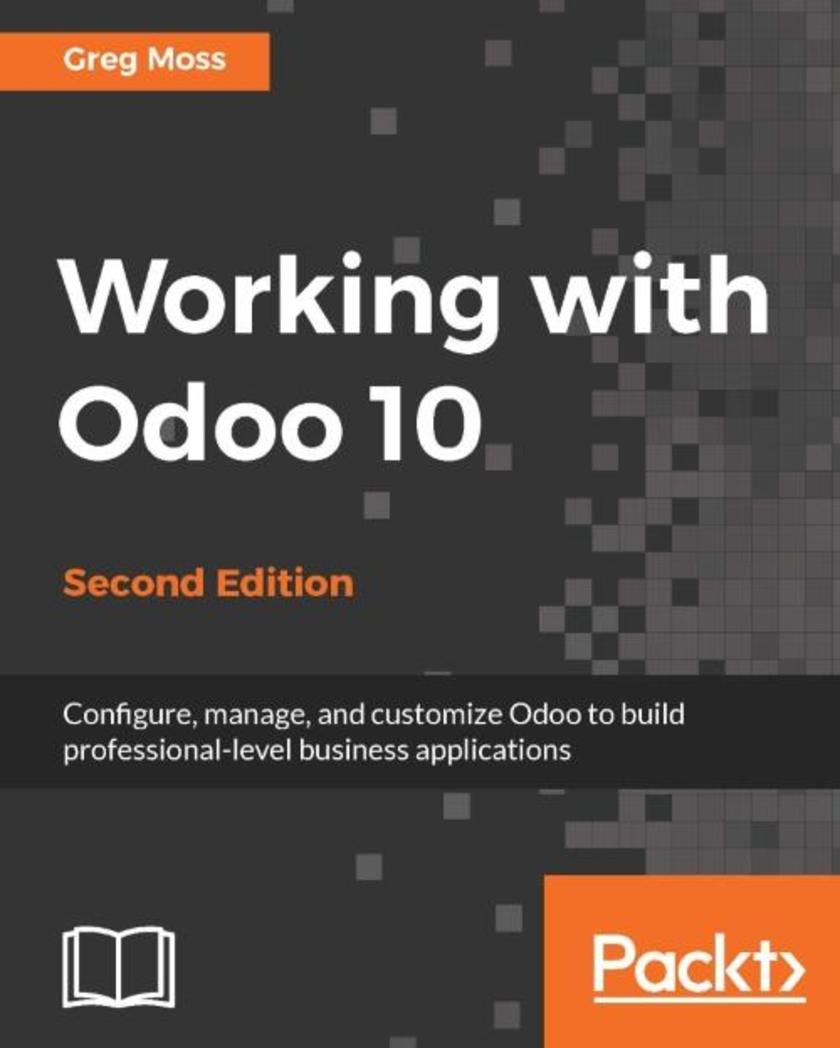
Working with Odoo 10 - Second Edition
¥90.46
Configure, manage, and customize Odoo to build professional-level business applications About This Book Build an Odoo module and integrate it with other platforms through this practical guide This book is the perfect companion to help you customize your Odoo installations for your enterprise requirements Use project management along with analytics for better reporting Who This Book Is For This book is for those who have not used Odoo before, allowing you to learn advanced-level features with Odoo such as creating your own custom modules. You do not need any knowledge of Odoo. What You Will Learn Configure a functioning customer relationship management system Set up a purchasing and receiving system Implement manufacturing operations and processes using real-world examples Discover the capabilities of Odoo's financial accounting and reporting features Integrate powerful human resource applications Utilize Odoo's project management application to organize tasks Customize Odoo without writing a line a code In Detail Odoo is a comprehensive set of open-source enterprise management applications. Now with Odoo 10, you have access to a powerful website builder, integrated e-commerce features, and a fast-growing community to help transform and modernize your business. You will start with how to set up Odoo online and on your own server. You’ll then configure the basic company settings required to quickly getting your first Odoo system up and running. Later you’ll explore Customer Relationship Management in Odoo and and their importance in today's modern business environment. Next we will deep dive into purchasing application with Odoo and learn some of the primary functionalities of ERP systems for manufacturing operations. You will then use analytic accounting to provide better reporting. Finally you will walk through the recent Odoo 10 features with respect to the community and enterprise edition giving you complete understanding of what Odoo can do for you no matter the reason! Style and approach This fast-paced, step-by-step guide will show you everything you need to know about the Odoo module ecosystem through practical and real-world examples.
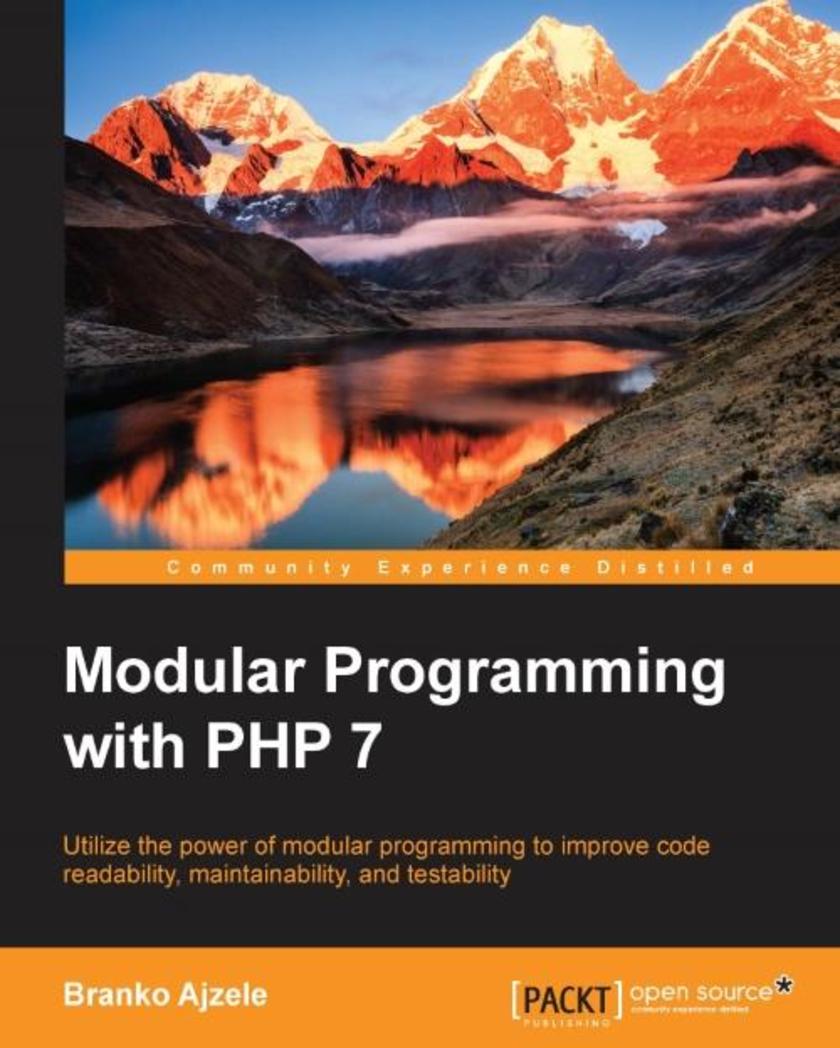
Modular Programming with PHP 7
¥90.46
Utilize the power of modular programming to improve code readability, maintainability, and testability About This Book This book demonstrates code reusability and distributed development to get high speed, maintainable, and fast applications It illustrates the development of a complete modular application developed using PHP7 in detail This book provides a high-level overview of the Symfony framework, a set of tools and a development methodology that are needed to build a modular web shop application Who This Book Is For This step-by-step guide is divided into two sections. The first section explores all the fundamentals of modular design technique with respect to PHP 7. The latter section demonstrates the practical development of individual modules of a web shop application. What You Will Learn Discover the new features of PHP 7 that are relevant to modular application development Write manageable code based on the GoF design patterns and SOLID principles Define the application requirements of a working modular application Explore the ins and outs of the Symfony framework Build a set of modules based on the Symfony framework that comprise a simple web shop app Use core modules to set the structure and dependencies for other modules to use Set up entities that are relevant to the module functionality and see how to manage these entities In Detail Modular design techniques help you build readable, manageable, reusable, and more efficient codes. PHP 7, which is a popular open source *ing language, is used to build modular functions for your software. With this book, you will gain a deep insight into the modular programming paradigm and how to achieve modularity in your PHP code. We start with a brief introduction to the new features of PHP 7, some of which open a door to new concepts used in modular development. With design patterns being at the heart of all modular PHP code, you will learn about the GoF design patterns and how to apply them. You will see how to write code that is easy to maintain and extend over time with the help of the SOLID design principles. Throughout the rest of the book, you will build different working modules of a modern web shop application using the Symfony framework, which will give you a deep understanding of modular application development using PHP 7. Style and approach This book is for intermediate-level PHP developers with little to no knowledge of modular programming who want to understand design patterns and principles in order to better utilize the existing frameworks for modular application development.
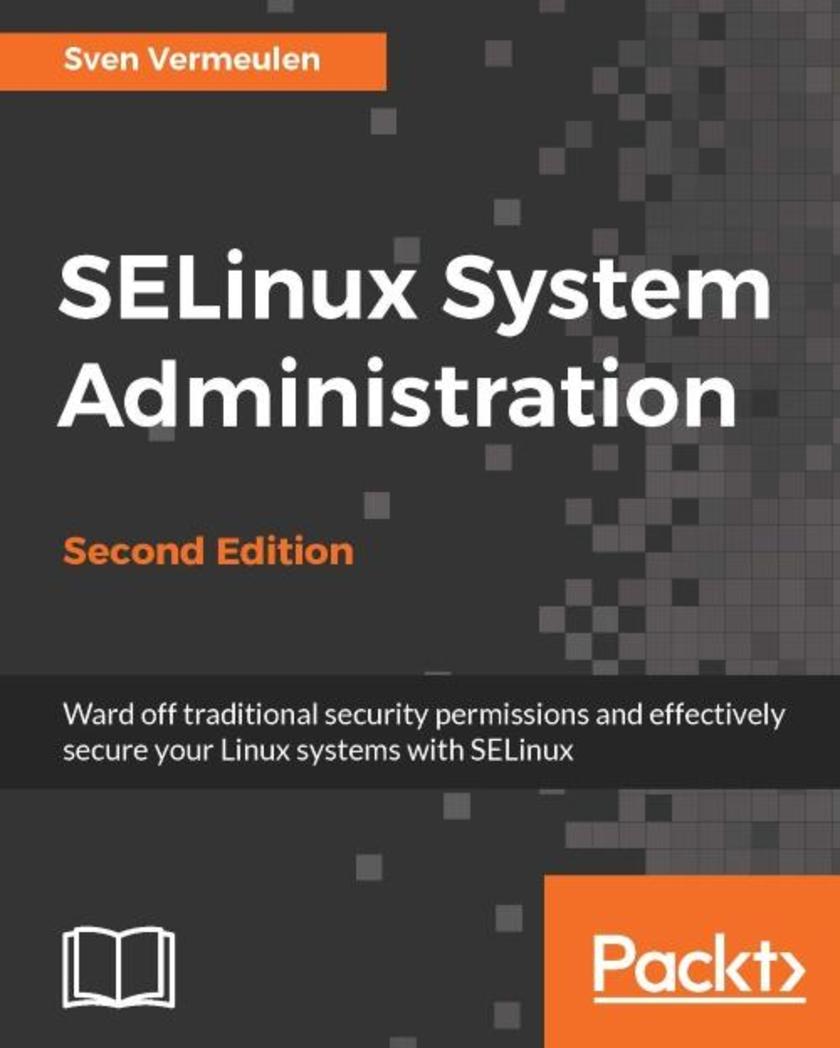
SELinux System Administration - Second Edition
¥90.46
Ward off traditional security permissions and effectively secure your Linux systems with SELinux About This Book Leverage SELinux to improve the secure state of your Linux system A clear approach to adopting SELinux within your organization Essential skills and techniques to help further your system administration career Who This Book Is For This book is for Linux administrators who want to control the secure state of their systems. It’s packed with the latest information on SELinux operations and administrative procedures so you’ll be able to further harden your system through mandatory access control (MAC) – a security strategy that has been shaping Linux security for years. What You Will Learn Analyze SELinux events and selectively enable or disable SELinux enforcement Manage Linux users and associate them with the right role and permission set Secure network communications through SELinux access controls Tune the full service flexibility by dynamically assigning resource labels Handle SELinux access patterns enforced through the system Query the SELinux policy in depth In Detail Do you have the crucial job of protecting your private and company systems from malicious attacks and undefined application behaviorAre you looking to secure your Linux systems with improved access controlsLook no further, intrepid administrator! This book will show you how to enhance your system’s secure state across Linux distributions, helping you keep application vulnerabilities at bay. This book covers the core SELinux concepts and shows you how to leverage SELinux to improve the protection measures of a Linux system. You will learn the SELinux fundamentals and all of SELinux’s configuration handles including conditional policies, constraints, policy types, and audit capabilities. These topics are paired with genuine examples of situations and issues you may come across as an administrator. In addition, you will learn how to further harden the virtualization offering of both libvirt (sVirt) and Docker through SELinux. By the end of the book you will know how SELinux works and how you can tune it to meet your needs. Style and approach This book offers a complete overview of SELinux administration and how it integrates with other components on a Linux system. It covers the majority of SELinux features with a mix of real life scenarios, de*ions, and examples. This book contains everything an administrator needs to customize SELinux.

NHibernate 4.x Cookbook - Second Edition
¥90.46
Over 90 incredible and powerful recipes to help you efficiently use NHibernate in your application About This Book · Master the full range of NHibernate features through detailed example recipes that you can quickly apply to your own applications· Reduce hours of application development time and get a better application architecture and improved performance· Create, maintain, and update your database structure automatically with the help of NHibernate Who This Book Is For This book is written for .NET developers who want to use NHibernate and those who want to deepen their knowledge of the platform. Examples are written in C# and XML. Some basic knowledge of SQL is assumed. If you build .NET applications that use relational databases, this book is for you. What You Will Learn · Create a persistent object model to move data in and out of your database· Build the database from your model automatically· Configure NHibernate for use with WebForms, MVC, WPF, and WinForms applications· Create database queries using a variety of methods· Improve the performance of your applications using a variety of techniques· Build an infrastructure for fast, easy, test-driven development of your data access layer· Implement entity validation, auditing, full-text search, horizontal partitioning (sharding), and spatial queries using NHibernate Contrib projects In Detail NHibernate is a mature, flexible, scalable, and feature-complete open source project for data access. Although it sounds like an easy task to build and maintain database applications, it can be challenging to get beyond the basics and develop applications that meet your needs perfectly. NHibernate allows you to use plain SQL and stored procedures less and keep focus on your application logic instead. Learning the best practices for a NHibernate-based application will help you avoid problems and ensure that your project is a success. The book will take you from the absolute basics of NHibernate through to its most advanced features, showing you how to take full advantage of each concept to quickly create amazing database applications. You will learn several techniques for each of the four core NHibernate tasks—configuration, mapping, session and transaction management, and querying—and which techniques fit best with various types of applications. In short, you will be able to build an application using NHibernate by the end of the book. You will also learn how to best implement enterprise application architecture patterns using NHibernate, leading to clean, easy-to-understand code and increased productivity. In addition to new features, you will learn creative ways to extend the NHibernate core, as well as gaining techniques to work with the NHibernate search, shards, spatial, envers, and validation projects. Style and approach This book contains recipes with examples organized in functional areas, each containing step-by-step instructions on everything necessary to execute a particular task. The book is designed so you can read it from start to end or just open up any chapter and start following the recipes.




 购物车
购物车 个人中心
个人中心



